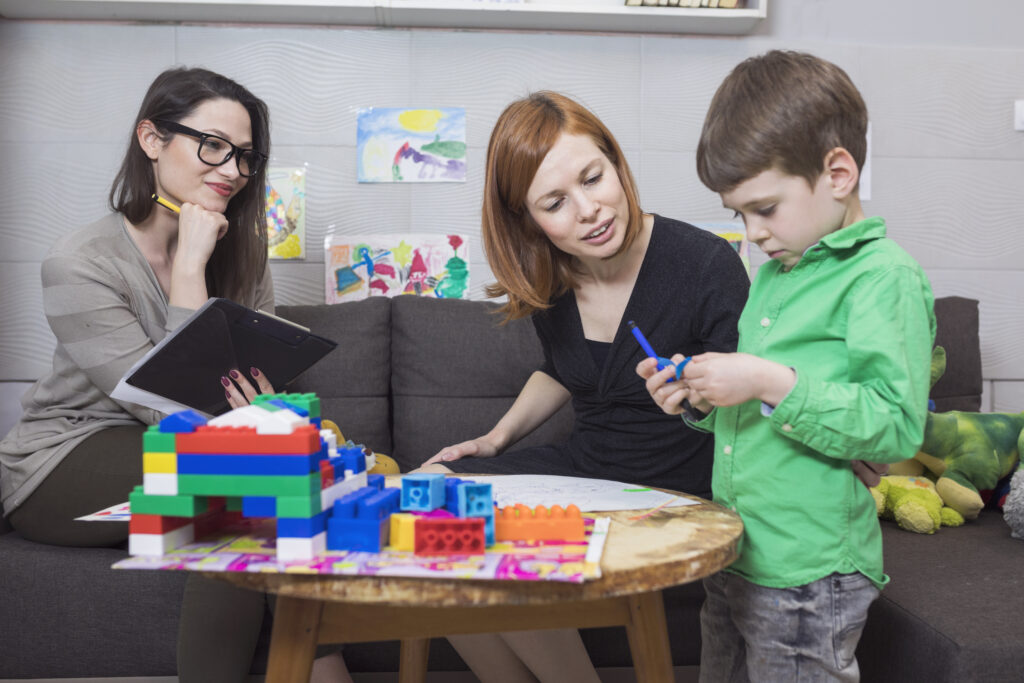 As a new school year approaches, many of our parents start thinking about whether their child should enroll in school or stay exclusively in ABA therapy. The answer to that question is going to depend a lot on where your child is on their therapy journey and your family’s goals and priorities. We always like to start these conversations with a reminder of what ABA is and what it is not. The main goal of your BCBA is to help your child and family learn the skills necessary to be successful in the least restrictive environment possible. We are here to work ourselves out of a job by teaching crucial skills that help your child thrive in the community and at home. We do this by working closely with our families to identify what barriers may be present for your child to thrive in these environments and teach those skills.
As a new school year approaches, many of our parents start thinking about whether their child should enroll in school or stay exclusively in ABA therapy. The answer to that question is going to depend a lot on where your child is on their therapy journey and your family’s goals and priorities. We always like to start these conversations with a reminder of what ABA is and what it is not. The main goal of your BCBA is to help your child and family learn the skills necessary to be successful in the least restrictive environment possible. We are here to work ourselves out of a job by teaching crucial skills that help your child thrive in the community and at home. We do this by working closely with our families to identify what barriers may be present for your child to thrive in these environments and teach those skills.
So what questions should you and your BCBA be considering?
- Is your child at risk of hurting themselves or others in the school setting?
- Is your child capable of participating in the structure and routine of the school environment?
- Is your child capable of learning through group instruction and examples or do they require specific 1:1 instruction for all skills?
- Would the teachers be able to include the student in lessons while also maintaining the attention needed to help them be successful?
- Are the priorities of the treatment plan more social in nature or are we still focusing on health and safety?
- Are academic skills now the most pressing priority?
As you process through these questions with your BCBA many families are able to identify what arrangement may be the best fit for everyone. At The Helm we have families that solely attend ABA, attend partial ABA and school, and some kids that attend the entire school day with only after school therapy. Families that choose to solely focus on ABA therapy frequently have children under 7 years old or have therapy goals that prioritize the safety of their child through decreasing behavior that would otherwise impede their ability to learn in a school setting. Families who choose to combine school and ABA therapy with a partial day at both find that the school setting is beneficial to helping meet social and or academic needs, but may not address all priorities such as behavior, self-help and communication skills. Finally, families that have graduated beyond daytime ABA and only utilize after school therapy find that their child may be able to appropriately acquire new skills and learn in the school setting and may only need a little support to facilitate social skills.
Many times when we speak with families they aren’t sure what their rights are with regards to mixing school and therapy. In Texas children under the age of 7-years old are not required to attend school, so in that situation parents are free to choose to attend school or stay in therapy full time. Once the family chooses to attend public school (regardless of age) the state of Texas allows children with autism to leave school without an absence in order to attend therapies. Under this provision a child must begin or end their day at school. Typically we see our youngest children come to therapy in the morning and then leave mid-day to attend the rest of the school day during the remaining parts of the day. For our older children we typically see children attend the first part of school and leave around lunch time to attend therapy.
We know deciding to send your child to school or keep them solely in ABA therapy is a big decision. We help families walk through this transition all the time. If you need help or want to know more about what the process may look like, please reach out to your BCBA or give us a call!



